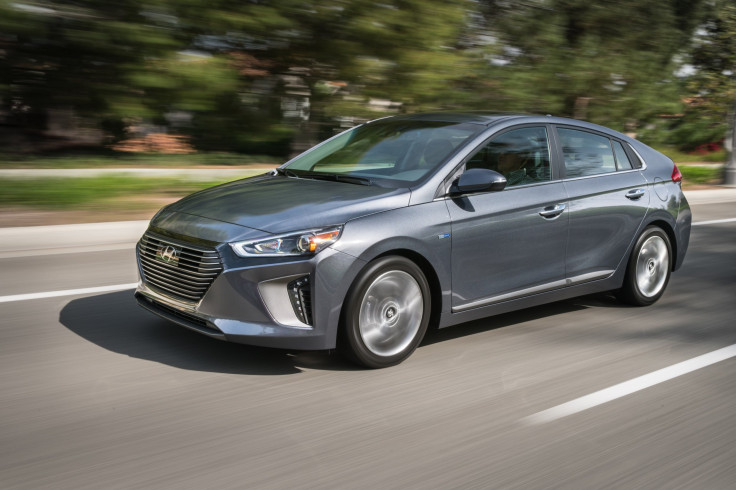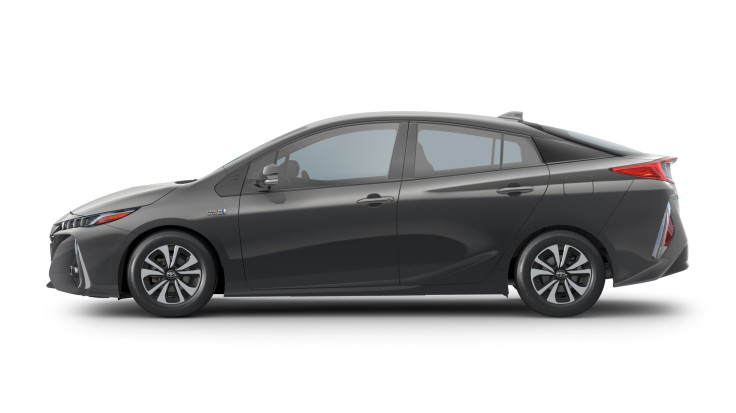Hyundai Ioniq Is Challenging Toyota’s Dominance In Hybrid Car Sales At The Worst Possible Time

The annual New York International Auto Show isn't typically the venue where automakers make big announcements, preferring instead to save their most important new-vehicle unveils for the more popular expos in Geneva, Frankfurt, Detroit and Los Angeles. As in recent years, this year's 10-day New York show, starting Friday, will be dominated by sports cars and utility vehicles, including a concept version of the Lincoln Navigator sporting bizarre gull-wing doors and a muscly, 640-horsepower Chevrolet Camaro with a new 10-speed automatic transmission.
But nestled among the fleet of look-alike SUVs and refreshed versions of cars we’ve already seen are two new green car players: Toyota’s next-level Prius Prime plug-in hybrid, and Hyundai’s Ioniq (pronounced eye-on-ick), the South Korean automaker’s first dip into a market Toyota has dominated for nearly 20 years.
While the rest of the industry offers hybrid options in existing models, the Ioniq becomes the second so-called dedicated hybrid car, meaning it was built from scratch as a low-emission vehicle, which allows engineers more room to play with the design and accommodate the battery technology more efficiently.

In a first for the industry, Hyundai’s Ioniq is boasting the first drivetrain that offers buyers the choice of standard hybrid, plug-in hybrid or fully electric. Meanwhile, Toyota is selling the Prime as a new and improved Prius with the highest fuel economy in its class at 120 miles per gallon equivalent (MPGe). Hyundai says the Ioniq plug-in hybrid will travel 25 miles on electric power alone compared to Toyota’s 22 miles. The fully electric Ioniq will travel 110 miles per full battery charge, which barely surpasses the current Nissan Leaf and could be quickly overtaken by an upcoming roster of electric cars, including the Chevrolet Bolt.
Both cars are vying for the same eco-conscious fuel-sipping consumer, but they’re doing it at the worst possible time.
“Hyundai releases its new alternative-fuel vehicle in an arena that has been extremely challenging for the segment over the last two years,” said Akshay Anand, analyst for Kelley Blue Book. “This likely won’t change any time soon.”
The reason is simple: Low gasoline prices have nudged consumers toward less-fuel-efficient utility vehicles, making the hybrid sell more difficult. With the Prius’ reputation for sluggish performance, high gasoline prices have been its traditional allure. Now that fuel is around $2 a gallon in the world’s second-largest auto market, sales of low-emission cars plunged by more than 13 percent last year, according to industry analyst LMC Automotive. And Toyota says Prius deliveries fell 11 percent last year, the first retreat in growth since the Prius was introduced in 1997.

Both automakers seem aware that fuel economy can’t be the only thing to attract consumers. During its presentation on Wednesday, Hyundai focused on things like compatibility with both Android Auto and Apple CarPlay, as well as tablet storage and “seamless connectivity” with mobile devices. Toyota underscored the Prime’s quad LED lights and 11.6-inch multimedia touchscreen. And both automakers are offering as options the latest driving assist technology, including parking assist, emergency automatic forward collision-avoidance systems and auto apps.
Until gasoline prices rise, the battle between Hyundai and Toyota in the hybrid field for the 2017 model-year will likely lean toward which car offers the most performance and technological convenience for the money. Prices for both the Prius Prime and the Ioniq trio have yet to be disclosed.
© Copyright IBTimes 2025. All rights reserved.






















